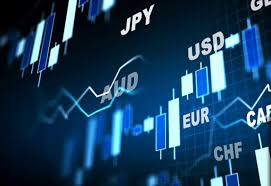How exponential moving averages work

There is a debunked myth that banks are following some kind of 'magical moving average.' They think that somewhere there is a moving average that cannot miss. But nothing could be further from the truth. Like anything else, a moving average is a tool that traders use to define a trend and perhaps look for potential support and resistance areas.
The EMA
EMA means Exponential Moving Average. And to know more about this, we need to understand first the simple moving average.
The moving average is the plotting of the average price over the last defined number of candlesticks. Likely, it is the average price in the previous 20 candles, 50 candles, 100 candles, etc.
The trader can choose the number of candles they wish to look back at. As moving averages can use the open, high, low, or close price of the candlestick, 99.9% of the time, some people will use them applied to these candlesticks' closing prices.
Then, the simple moving average or SMA is the straightforward version of moving average calculation. To elaborate, if the 20 SMA is plotted on the chart, it will show the average price at the closes of the previous 20 candlesticks. When the market advances to generate another candlestick, it would adjust the calculation to include only the immediate last 20 candlesticks, and so on.
As they take the average closing prices, add them, then divide them by 20, the SMA shows its calculated value. After that, it would plot the chart's calculation, making a line through the dots to make a longer line across the chart's width.
With that, the EMA in forex trading is similar, except the formula is mathematically weighted to have more emphasis on the most recent candlesticks. This causes this kind of moving average to be more immediately sensitive to price fluctuations. Thus, it would change direction faster.
How It Works
There are different ways to use EMA in forex online trading. And to be honest, one's imagination might be the only limit.
- As a Measurement of Trend
In the most basic form, traders typically use the EMA as a measurement of the trend. To put it simply, if the moving average is increasing over time, then it is assumed that the trend is also very positive. On the other hand, if a moving average is shifting lower over time, then the market is being bearish or negative.
- As Dynamic Support or Resistance
Several traders will use specific EMAs as dynamic support and resistance. And this is because there are a few very widely followed Exponential Moving Averages. Generally, they harken back to the days of stock trading. Now, some of the most common ones are the 20-day EMA, 50-day EMA, 100=day EMA, and 200-day EMA.
Using these specific round numbers is psychological and goes back to the early years of technical analysis. So, it is more or less a convention than anything else. As traders go on in their online trading career, they see moving averages that people insist perform better than others. But in the end, it would always be a personal preference issue.
Shorter-term traders tend to go on smaller numbers line the 9 EMA. And this is because it is so fast to react in comparison to something like the 50 EMA. But for the longer-term traders, they must pay more attention to higher numbers because it gets much more details and movement to change the direction of the moving averages. Therefore, it keeps the trade for much more extended periods of time.
- As a 'Dragon'
Some traders use this type of set up to guarantee that they are trading with a number of traders as far as the trend is concerned. Also, they would only trade in the direction of all moving averages and only if they are moving in the same manner.
- As a Crossover System
One more way to use the EMA as an indicator is through a crossover system as a trading strategy. This has become one of the most basic online trading systems existing. And by its very nature, it must have a trend to be profitable. They do this by using two moving averages: a short-term moving average and a longer-term moving average.
The concept is that if the shorter moving averages cross over the 200-day EMA, traders should look to take long trades. Contrarily, if the 50-day EMA crosses below the 200-day EMA, traders should go for the short trades.
Other traders use this as a mechanical system to simply make trades with no filter whenever the crossover happens. The main issue with this is that it requires a strong trend for it to work. And in a ranging market, there are many whipsaw trading - causing repeated small losses. However, this would eventually get a strong trend and generate more enormous profits. It takes a specific type of psychology to trade with this system over the long term.
This article was submitted by Uptos.




